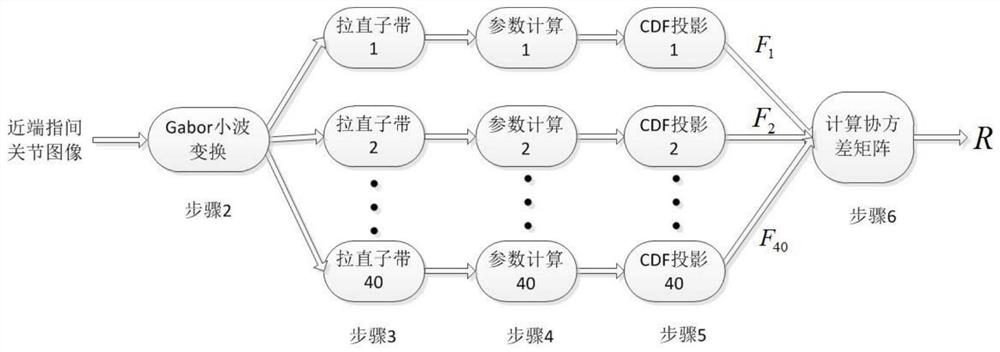Recognition method of proximal interphalangeal joint texture based on gabor wavelet
A recognition method and joint technology, applied in the field of pattern recognition, can solve problems such as poor stability, achieve good resistance, resist image noise interference, and ensure security.
- Summary
- Abstract
- Description
- Claims
- Application Information
AI Technical Summary
Method used
Image
Examples
Embodiment Construction
[0018] Specific embodiments of the present invention are specified below:
[0019] The content of the invention is divided into two parts: feature extraction and identification and authentication. The targets of recognition are the lines on the back of the proximal interphalangeal joints of the fingers, see figure 1 The area enclosed by the middle rectangle, for a side view see figure 1 In the right picture, the intercepted area is about 2cm. The feature extraction part will finally obtain the features of the finger image; the recognition part is to compare the features of the currently collected identity with the registered inter-finger joint feature vectors. The concrete steps that the inventive method realizes are as follows:
[0020] Step 1. Segment the region of interest (ROI) at the interfinger joints:
[0021] Step 1.1. Perform threshold segmentation on the finger image to obtain ROIs at the first joints of the four fingers.
[0022] In step 1.2, the four ROIs are ...
PUM
 Login to View More
Login to View More Abstract
Description
Claims
Application Information
 Login to View More
Login to View More - R&D
- Intellectual Property
- Life Sciences
- Materials
- Tech Scout
- Unparalleled Data Quality
- Higher Quality Content
- 60% Fewer Hallucinations
Browse by: Latest US Patents, China's latest patents, Technical Efficacy Thesaurus, Application Domain, Technology Topic, Popular Technical Reports.
© 2025 PatSnap. All rights reserved.Legal|Privacy policy|Modern Slavery Act Transparency Statement|Sitemap|About US| Contact US: help@patsnap.com



